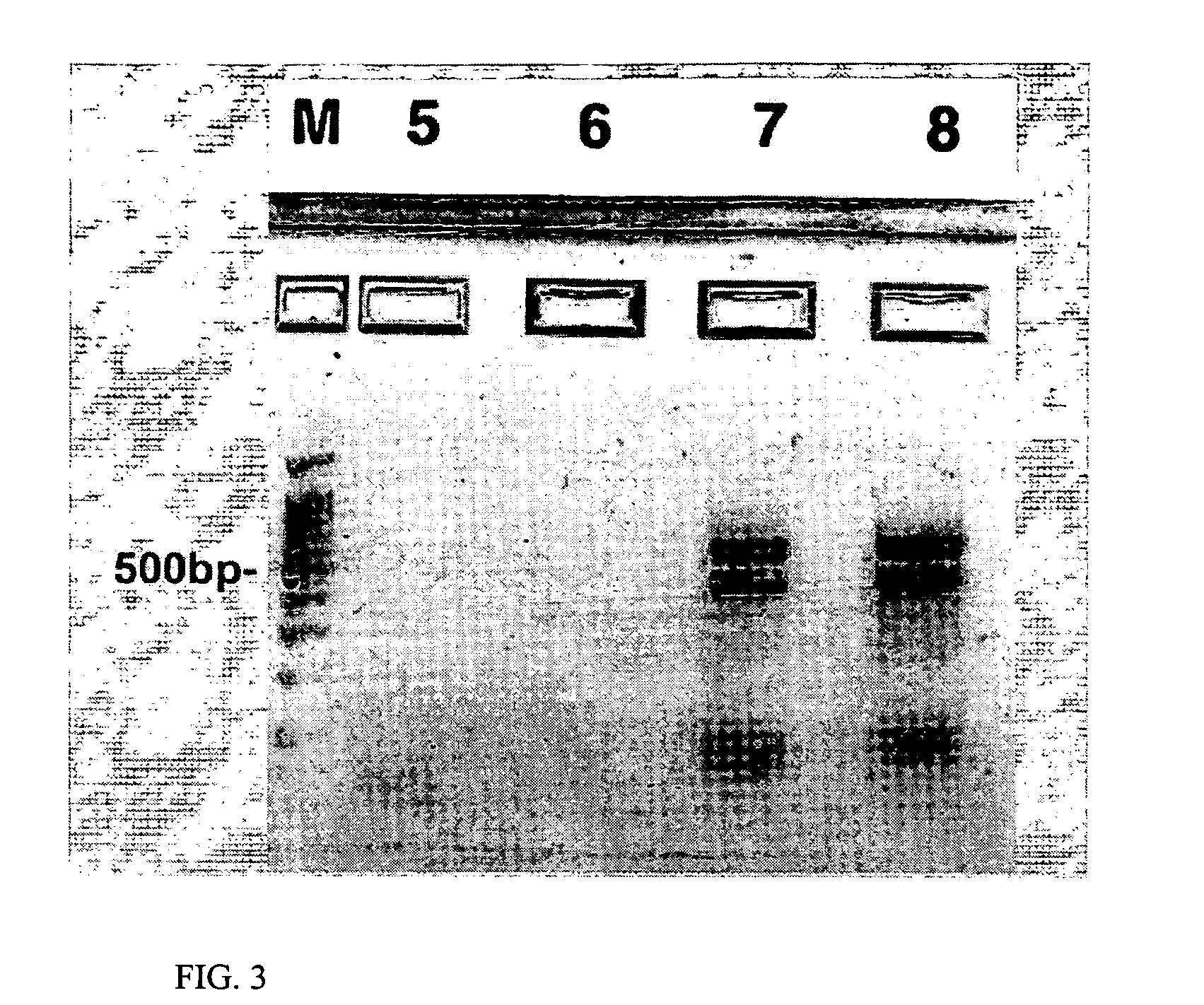Methods and products for biasing cellular development
a cell and stem cell technology, applied in the field of methods and products, can solve the problems of increasing the risk of tumerogenicity of some cells implanted from this source, not being able to continue cell culture, and requiring substantial effor
- Summary
- Abstract
- Description
- Claims
- Application Information
AI Technical Summary
Problems solved by technology
Method used
Image
Examples
example 1
This example demonstrates that transfection of a human neural stem cell with Hath1 results in the transfected cell (or its progeny) differentiating into a cell having markers of an inner ear hair cell (IEHC). Hath1 (in humans) and Math1 (in mice) are basic helix-loop-helix transcription factors (and homologs of the Drosophila gene atonal) that are expressed in inner ear sensory epithelia. Since embryonic Math1-null mice failed to generate cochlear and vestibular hair cells, it appears to be required for the generation of inner ear hair cells (Bermingham N A, Hassan B A, Price S D, Vollrath M A, Ben-Arie N, Eatock R A, Bellen H J, Lysakowski A, Zoghbi H Y. 1999. Math1: An essential gene for the generation of inner ear hair cells. Science 284 (June 11): 1837-1841). Fate determination of mammalian IEHC is generally completed by birth. However, overexpression of Math1 in postnatal rat cochlear explant cultures resulted in production of extra hair cells from columnar epithelial cells loc...
example 2
Introduction
A cholinergic deficit is one of the primary features of Alzheimer's disease (AD), where there is a marked degeneration of long-projecting axons of cholinergic neurons in the basal forebrain and target areas in the hippocampus and cerebral cortex. Recent progress in stem cell technologies suggests the probability of using neuroreplacement strategies in AD therapy, although several hurdles are implicated: i) is it possible to generate large numbers of cholinergic neurons from stem cells; and ii) can long-projecting cholinergic neurons be replaced? Toward improving the ability to conduct research in the area of cell implantation and replacement therapies, and toward achieving desired results in later-developed therapies, embodiments of the present invention are directed to bias human neural stem cells (HNSCs) to differentiate to cells having characteristics of cholinergic neurons through genetic manipulation of endogenous neural precursors in situ.
The LIM-homeobox gene Lhx8...
example 3
Using the same vector formation and transfection methods as in Example 2, the Human Lxh8 gene (SEQ ID NO: 6) is transfected into HNSCs. Transfected NHSC cells are cultured in a first treatment that includes LA-N-2 cells that are treated with RA and that express both Lhx8 and ChAT. A co-culture control comprises NHSCs that are not transfected but that are in the same culture vessel as LA-N-2 that are treated with RA and that express both Lhx8 and ChAT. For the first treatment and the co-culture control, HNSC cells are placed in cell culture inserts with an appropriate pore size and suspended in basal media (in the absence of FGF-2 and EGF and without the addition of other extrinsic differentiation factors) over differentiated LA-N-2 cells plated in 6-well plates.
Immunochemistry follows the same procedure as in Example 2 above.
Results indicate that HNSCs transfected with the Human Lxh8 gene (SEQ ID NO: 6) also are predisposed, or biased, to differentiate into cells that have character...
PUM
| Property | Measurement | Unit |
|---|---|---|
| volumes | aaaaa | aaaaa |
| total volume | aaaaa | aaaaa |
| volume | aaaaa | aaaaa |
Abstract
Description
Claims
Application Information
 Login to View More
Login to View More - R&D
- Intellectual Property
- Life Sciences
- Materials
- Tech Scout
- Unparalleled Data Quality
- Higher Quality Content
- 60% Fewer Hallucinations
Browse by: Latest US Patents, China's latest patents, Technical Efficacy Thesaurus, Application Domain, Technology Topic, Popular Technical Reports.
© 2025 PatSnap. All rights reserved.Legal|Privacy policy|Modern Slavery Act Transparency Statement|Sitemap|About US| Contact US: help@patsnap.com



